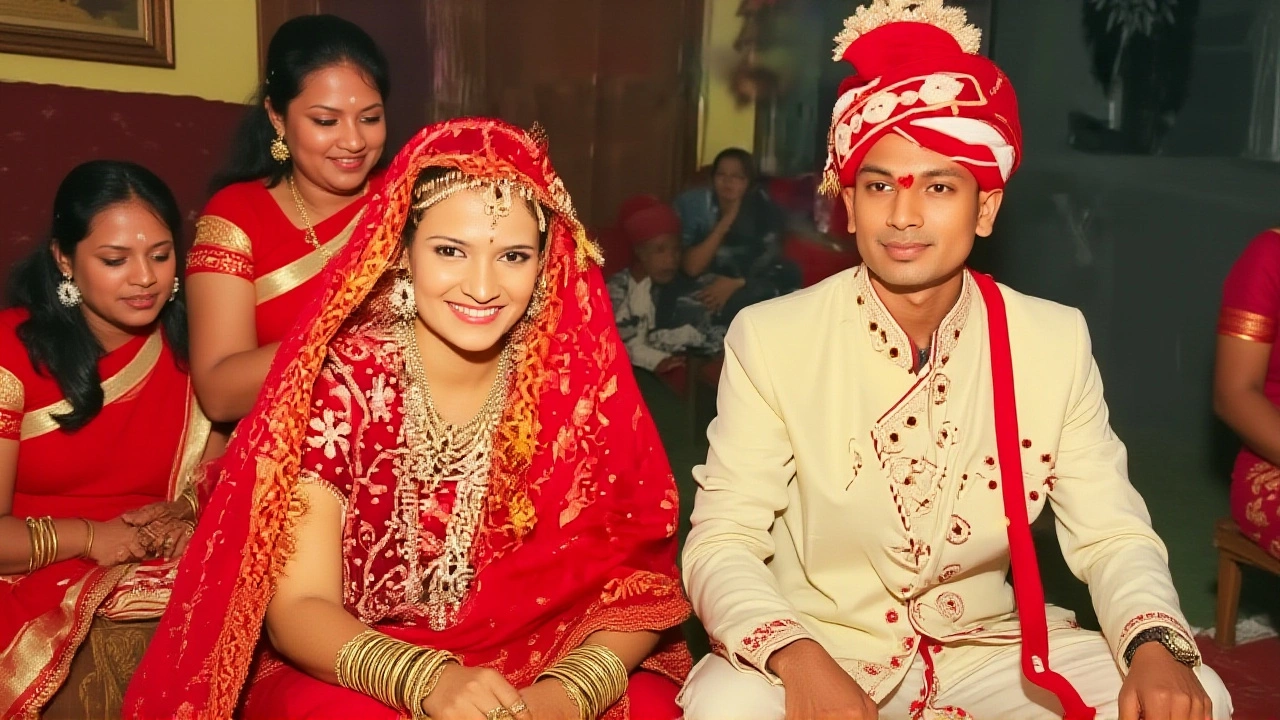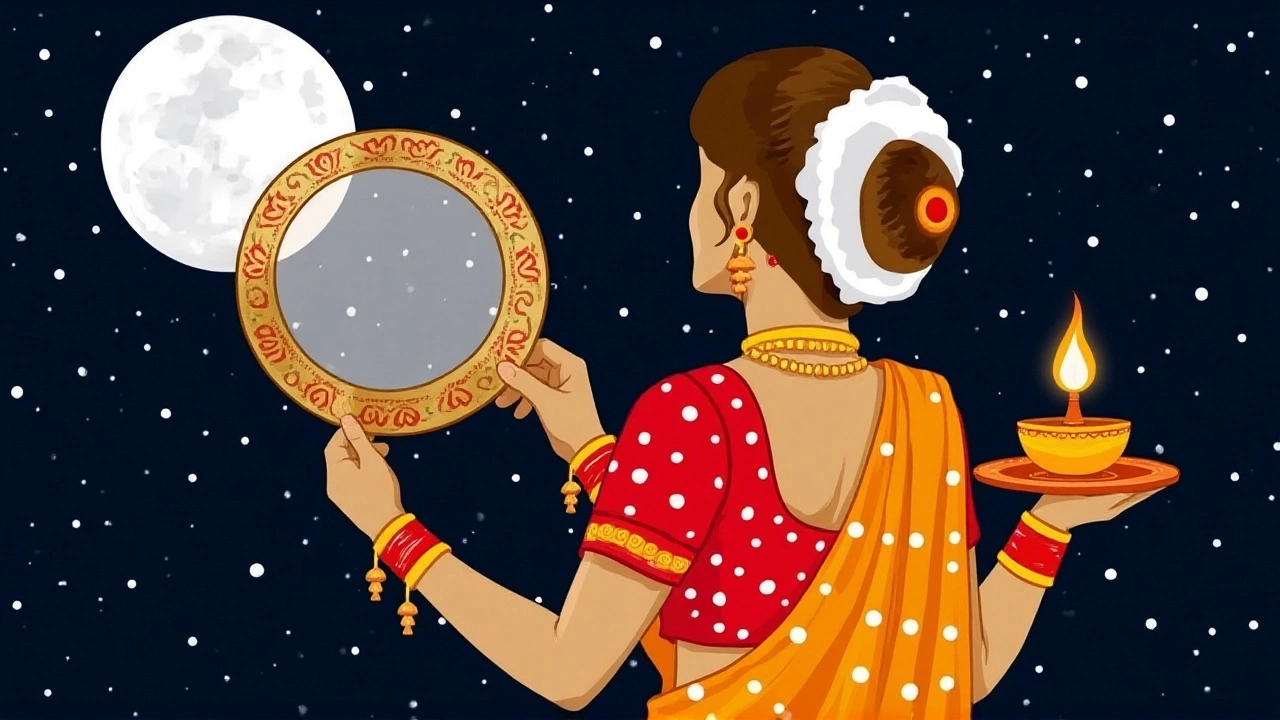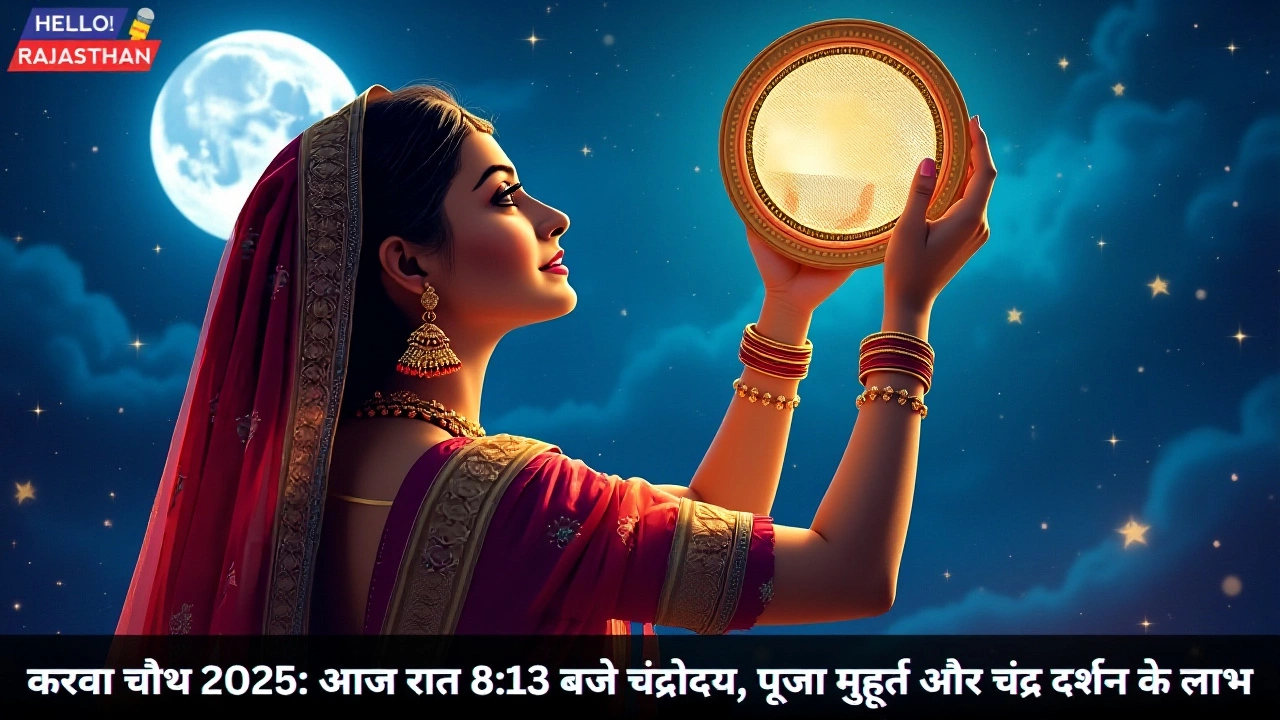When Karwa Chauth 2025 fell on Friday, October 10, married Hindu women across New Delhi and dozens of other cities began a water‑less fast that lasts from sunrise until the first glimpse of the moon. The ritual, steeped in centuries‑old tradition, aims to secure their husbands’ longevity and marital bliss. According to Drik Panchang, the Chaturthi tithi started at 10:54 PM IST on October 9 and ends at 7:38 PM IST on October 10, framing the day’s puja and fasting schedule.
Why Karwa Chauth Matters Today
The fast isn’t just about abstaining from food; it’s a cultural affirmation that ties family, community and astronomy together. As Amar Ujala noted, the ritual “strengthens marital bonds and ensures the husband’s longevity.” This year, the observance is deemed especially auspicious because, as reported by Jagran, the dreaded Bhadra Kaal does not intersect with the festival, removing a traditionally inauspicious period.
Key Dates and Astronomical Timings for 2025
Here’s a quick rundown of the celestial clock that guides the fast:
- Chaturthi Tithi begins: 10:54 PM IST, 9 Oct 2025 (Drik Panchang)
- Fasting starts (sunrise): approx 6:19 AM IST in Delhi
- Puja muhurat window opens: varies by city, earliest at 5:45 PM IST (Kolkata)
- Moonrise (Chand Nikalne Ka Time): ranges from 7:55 PM IST (Kolkata) to 8:43 PM IST (Mumbai)
- Fast breaks after moon darshan and arghya offering
City‑Specific Puja Muhurat Windows
The puja muhurat—considered the most propitious time for the ceremony—differs from one metropolis to another. Below are the windows reported by ABP Live and cross‑checked with News18:
- Delhi: 5:57 PM – 7:11 PM IST (Drik Panchang) or 6:05 PM – 7:22 PM IST (ABP Live)
- Mumbai: 6:10 PM – 7:25 PM IST
- Kolkata: 5:45 PM – 7:00 PM IST
- Lucknow: 5:58 PM – 7:15 PM IST
- Jaipur: 6:00 PM – 7:18 PM IST
- Chandigarh: 6:02 PM – 7:20 PM IST
These windows are calculated based on the position of the moon relative to the horizon and the time required for the traditional arghya ceremony.

Moonrise Times Across Major Indian Cities
Spotting the moon at the right moment is the climax of Karwa Chauth. Different media outlets have listed slightly varying times, but the consensus is clear:
| City | Moonrise (IST) |
|---|---|
| Delhi | 8:13 |
| Noida | 8:13 – 8:24 |
| Gurugram | 8:14 |
| Ghaziabad | 8:11 |
| Faridabad | 8:13 |
| Mumbai | 8:43 |
| Kolkata | 7:55 |
| Lucknow | 8:09 – 8:20 |
| Jaipur | 8:21 |
| Chandigarh | 8:15 |
After the moon peaks, women perform the arghya—offering raw milk, honey, and Ganga jal in a lota while viewing the moon through a sieve or dupatta. The ritual concludes with a quick glance at their husband’s face before finally breaking the fast.
Ritual Steps and Symbolism
According to the Navbharat Times, the post‑moonrise ceremony unfolds as follows:
- Women stand in a circle, holding a lota filled with sacred liquids.
- They pour the mixture over rice grains tied to their dupatta, whispering prayers to Chandra Deva.
- Each participant gazes at the moon through a sieve, symbolising the removal of darkness from marital life.
- The husband returns home; the wife offers him the first sip of water, marking the end of the fast.
The act of sighting the moon first, then the husband, underscores the belief that a husband’s well‑being is intertwined with celestial blessings.

Expert and Media Observations
“This year’s muhurat is unusually clean because the Bhadra Kaal—an inauspicious period—doesn’t overlap with Karwa Chauth,” said a senior astrologer quoted by Jagran. The same source highlighted that “regions like Punjab, Haryana, Rajasthan, Uttar Pradesh and Madhya Pradesh saw the most coordinated live‑stream watch parties.”
ABP Live reported that thousands of women across Delhi‑NCR, Mumbai, Nagpur, Shimla, Jaipur, Indore and Bhopal successfully sighted the moon and broke their fast by 8:43 PM IST, marking the conclusion of a day‑long devotional marathon.
What to Expect Next Year
Looking ahead, astronomers predict that Karwa Chauth 2026 will shift about ten minutes later, nudging the puja muhurat and moonrise into a tighter window. Media outlets are already preparing live‑tracking dashboards, and tech‑savvy families are expected to rely on smartphone notifications from apps like Drik Panchang to stay synchronized.
Frequently Asked Questions
How is the puja muhurat calculated for each city?
Astrologers examine the moon's ascent angle, local sunrise time and the position of the Nakshatra. Organizations like Drik Panchang then convert those calculations into a clock‑time window that maximises the auspicious energy for the ritual.
What should a woman do if she misses the moonrise?
Traditionally, the fast can be broken after the next visible lunar phase, but many families wait until the following day’s dawn to perform a corrective puja. Some priests advise offering an extra arghya the next evening as a form of repentance.
Why is the moon viewed through a sieve or dupatta?
The sieve symbolizes filtering out negative influences, while the dupatta represents modesty. Seeing the moon through these objects is believed to amplify the protective blessings of Chandra Deva over the marriage.
Which regions observe Karwa Chauth most intensely?
North Indian states—Punjab, Haryana, Rajasthan, Uttar Pradesh and Madhya Pradesh—have the highest participation rates. Media monitoring by Jagran shows that over 70% of live‑stream viewers hail from these areas.
What are the health considerations for a nirjala fast?
Medical experts advise pregnant women, diabetics and those with chronic illnesses to skip the waterless fast. Some NGOs, citing health data from ABP Live, recommend a light, sugar‑free beverage after sunrise if needed.
